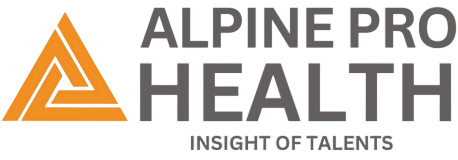The Emergency Department (ED) plays a critical role in patient care, handling high volumes of cases ranging from minor injuries to life-threatening emergencies. For hospitals and healthcare providers, accurate and timely ED coding encounters is essential for compliance, reimbursement, and overall revenue cycle integrity. However, the fast-paced nature of emergency care often makes coding complex, prone to errors, and resource-intensive.
In recent years, automation has emerged as a transformative force in medical coding. From Natural Language Processing (NLP) to Artificial Intelligence (AI)-driven coding assistants, automation is reshaping how ED coding is approached. While the opportunities are vast, automation also comes with inherent limitations that healthcare organizations must carefully evaluate.
The Current Landscape of ED Coding
Emergency Department coding primarily involves assigning appropriate CPT, ICD-10-CM, and HCPCS codes to ED visits based on physician documentation. Coders often face challenges such as:
- High patient volumes leading to coding backlogs.
- Complex documentation with varying levels of detail.
- Frequent denials due to errors in Evaluation and Management (E/M) level assignments.
- Regulatory compliance requirements that demand precision.
Automation aims to reduce these challenges by accelerating coding workflows, improving ED Coding Accuracy, and providing real-time decision support.
Opportunities of Automation in ED Coding
1. Enhanced Efficiency and Speed
Traditional ED coding can be time-consuming, especially in high-volume facilities. Automated coding tools use AI and NLP to analyze clinical notes and generate suggested codes in seconds. This accelerates claim submissions and shortens the revenue cycle.
2. Improved Coding Accuracy
Automation minimizes human errors that commonly occur in ED settings, such as incorrect E/M level assignment or missed procedures. By analyzing vast data sets and learning from patterns, AI-enabled systems can enhance coding precision, reducing claim denials and compliance risks.
3. Scalability in High-Volume Settings
EDs often experience patient surges, making it difficult for human coders to keep up. Automation allows hospitals to scale coding operations without the need for proportional increases in staffing. This ensures timely coding even during peak demand.
4. Real-Time Audit and Compliance Support
Automated systems can flag incomplete documentation or potential compliance issues before claims are submitted. For example, if a physician fails to document medical necessity for a certain procedure, the system can prompt corrections, reducing audit risks.
5. Support for Clinical Documentation Improvement (CDI)
Automation can identify documentation gaps that may affect code assignment. By highlighting missing elements in real-time, it supports CDI efforts and ensures that ED documentation accurately reflects patient care.
6. Integration with Electronic Health Records (EHRs)
Modern automated Coding Solutions integrate seamlessly with EHR platforms. This eliminates the need for manual data transfers, streamlines workflows, and improves coder productivity.
7. Cost Savings Over Time
Although initial investments in automation may be high, the long-term benefits include reduced staffing costs, fewer denials, and improved reimbursement all of which enhance financial performance for healthcare organizations.
Limitations of Automation in ED Coding
Despite its advantages, automation is not without challenges. Healthcare leaders must be aware of its limitations before fully relying on it.
1. Complex Clinical Scenarios
ED cases often involve multi-system conditions, comorbidities, and uncertain diagnoses. Automated systems may struggle with nuanced coding decisions that require human judgment and clinical expertise.
2. Dependence on Quality of Documentation
Automation relies heavily on physician documentation. If clinical notes are vague or incomplete, even the most advanced coding software may generate inaccurate results. Documentation quality remains a significant barrier.
3. Risk of Over-Reliance
While automation can improve efficiency, over-reliance may result in coders accepting machine-generated codes without critical review. This could lead to compliance issues or inappropriate billing.
4. High Initial Investment
Implementing AI-enabled coding platforms requires significant upfront investment in software, integration, and staff training. Smaller hospitals and rural facilities may find these costs prohibitive.
5. Regulatory and Payer Variability
Coding guidelines and payer requirements vary widely. Automated tools may not always adapt quickly to updates in CPT or ICD-10 codes, leading to errors or rejected claims if not continuously updated.
6. Data Privacy and Security Concerns
Automation in coding requires access to sensitive patient data. Healthcare organizations must ensure compliance with HIPAA and other regulations to safeguard information from breaches or misuse.
7. Limited Role in Critical Thinking
Automation excels at repetitive tasks but lacks the critical thinking and clinical intuition of experienced coders. For example, distinguishing between similar conditions or applying modifiers appropriately may still require human expertise.
Finding the Balance: Human + Machine Collaboration
The future of ED coding lies not in replacing coders with machines, but in creating a collaborative model. Coders should act as auditors and validators of machine-generated outputs, combining the efficiency of automation with the clinical expertise of human professionals.
Best Practices for Balancing Automation:
- Use automation for routine cases while reserving complex encounters for experienced coders.
- Implement continuous training so coders can adapt to evolving tools.
- Maintain audit processes to validate automated results regularly.
- Encourage physician education to improve documentation quality.
The Road Ahead: Future Trends in Automated ED Coding
- AI-Powered Predictive Analytics – Future tools may predict denial risks during the coding process, enabling proactive adjustments.
- Deeper EHR Integration – Automated coding will become more embedded in EHR systems for seamless workflows.
- Expansion of NLP Capabilities – Improved NLP will enhance the ability to interpret complex free-text physician notes.
- Global Adoption of ICD-11 – As ICD-11 replaces ICD-10 in many regions, automation tools will adapt to new coding structures and requirements.
- Focus on Value-Based Care – Automated coding will increasingly align with value-based payment models, ensuring that ED encounters are coded in a way that supports quality outcomes as well as reimbursement.
Conclusion
Automation in ED coding offers tremendous opportunities to improve efficiency, accuracy, and compliance. It reduces backlogs, enhances CDI, and ensures faster Reimbursements. However, its limitations particularly around complex cases, documentation dependency, and compliance risks mean it cannot fully replace human coders.The most effective strategy is a hybrid approach, where automation handles routine coding tasks and coders focus on validation, complex cases, and continuous improvement. By striking the right balance, healthcare organizations can leverage automation to enhance both clinical and financial outcomes in the Emergency Department.


